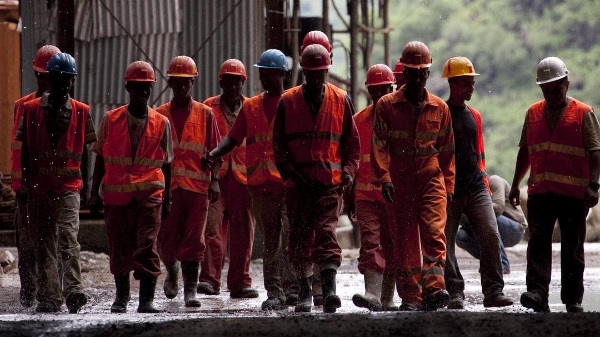
Two big hydroelectric dams, the Renaissance Dam (GERD) and Koysha Dam, to turn Ethiopia into an energy hub
(Salini Impregilo)–GERD and Koysha are the two faces of Ethiopia’s energy future, two large projects that will see the light of day in the coming years to take advantage of the country’s hydraulic potential.
The first one, the Grand Ethiopian Renaissance Dam (GERD), is well on its way to being completed. It is located 700 kilometers from Addis Ababa in the Benishangul-Gumaz region near the border with Sudan where Salini Impregilo is building what will become the biggest dam in Africa to rank among the top 10 in the world.
Its construction was announced in 2011, and with it the details of its imposing structure. Innovative techniques would be used to erect it, while the eventual impact that it will have on the country’s economy will be nothing short of revolutionary.
Located along the waters of the Blue Nile, the GERD consists of a hydroelectric plant with a main dam built of roller-compacted concrete (RCC) with a power plant on either side of the river. The one on the right bank has 10 Francine turbines with a combined installed production capacity of 3,750 MW, while the one on the left bank has six bigger turbines with a capacity of 6,000 MW.
Once it is put into service, the GERD will increase the amount of electricity produced in the country by 270% and bolster Ethiopia’s role as an energy exporter to neighboring countries. By transmitting electricity to Sudan, Djibouti, South Sudan and Yemen, it will be able to generate $2 billion in revenue a year.
The simple construction of the dam is already having a big impact on the territory. About 8,500 people work on the site, 8,200 of which from local communities. Another 1,250 are indirectly employed by the project, working for suppliers and subcontractors for a value of €450 million.
The undertaking is massive. Once complete, the dam will be 1,800 meters long, 155 meters high and the water basin that it will create 74 billion cubic meters in size.
Like the GERD, Koysha is just as grand a project, the construction of which was assigned to Salini Impregilo last March. The €2.5 billion contract foresees the construction of a dam using RCC. Some 170 meters in height, it will create a basin of six billion cubic meters. Its power plant will have eight Francis turbines.
With an installed capacity of 2,160 MW and an annual production capacity of 6,460 GWh, the Koysha Hydroelectric Project is the fourth to be built along the Omo River and, along with the recently inaugurated Gibe III and the future GERD, will contribute to transforming Ethiopia into one of the biggest producers of renewable energy on the continent.
It is the latest example of how Ethiopia’s energy policy is an important driver in the country’s development by exploiting its most precious natural resource: water.
About 85% of the energy produced comes from hydroelectricity and its weight is destined to increase both inside and outside the country in the coming years. Ethiopia is investing the equivalent of a third of its gross domestic product in hydroelectricity, totaling €12 billion. This enormous commitment has the objective of generating 40,000 MW of energy by 2035 by taking advantage of the big rivers that cross its territory.
The government’s 2010-2020 Growth and Transformation Plan, which is being executed in two phases, aims to use the country’s natural resources to transform Ethiopia into a renewable energy hub for the entire eastern region of Africa.
